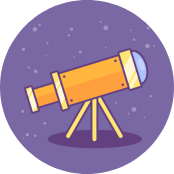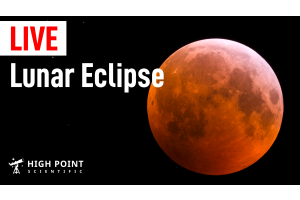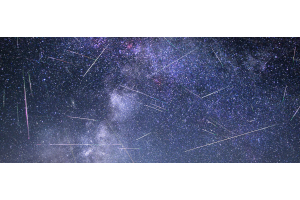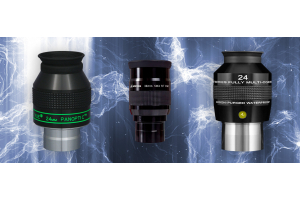
Table of Contents
Contents
When it comes to bringing your perfect astrophoto from idea to actual image, modern astronomy equipment has consistently been breaking down barriers; the ZWO CAA embodies this trend perfectly! Able to angle your target in the frame precisely how you want it with an effortless set of commands, this accessory is a powerful ally to have in your astrophotography tool kit. Today, we’re going to be looking at things to consider when adding this powerful accessory to your imaging train and confirmed system builds*. So, if adding this electronic angle assistant to your rig is what you’re after, read on!
*The builds provided in this article are official systems constructed by ZWO, created by our team, as well as popular blueprints from the talented astronomy community! As more popular solutions are confirmed and supporting accessories are released, we’ll be updating this list, so be sure to check back!
Considerations for Your CAA Construction
Building an imaging train from scratch can range anywhere from incredibly straightforward to 'break out the calculator app,' as we’ve drtailed in our How to Connect a Camera to a Telescope guide. As an accessory in the arena of imaging train equipment, the CAA is no exception. We’ll be looking at some of the considerations you need to take when constructing a train with the CAA in this section, but if you’re just looking for already blueprinted builds, click here to view our list below!
Connecting the CAA to Your Telescope
The ZWO CAA features an M54 female/internal threaded connection for connecting your telescope or corrective element. If you need to adapt a telescope with a smaller connection and plan on using a step-up ring like the ZWO M48 to M54 adapter ring, check that you have enough shoulder to prevent equipment threading through the CAA. There is an internal stop that will prevent threads from passing through to the rotating section. However, functionality/safety with equipment threaded against this has not been verified.
Connecting Equipment to the CAA
The ZWO CAA includes two externally threaded output plates, M54 and M48, that can be attached for connecting gear. This makes setups with ZWO Duo and full-frame cameras fairly straight forward. However, smaller sensor cameras will typically have M42 connections and 21 mm spacers (more on that in a moment). With certain cameras, like the ZWO ASI2600MM/MC Pro, you can replace the tilt plate with a larger threaded one for use with a larger connection spacer; however, other popular cameras like the ZWO ASI533MM/MC Pro will need less common step-down spacers or spacer adapter combinations.
Spacing
Accounting for spacing with the CAA is pretty simple. Adding just 16.5 mm of back spacing, it is pretty much guaranteed that your imaging train will have space for a camera, this electronic angle adjuster, and any adapters/ spacers you need to make that work. If you have a ZWO Duo or full-frame camera, you can simply slot this in place of your first spacer for a 55 mm imaging train. However, things get a bit trickier when you’re using the CAA with an OAG.
Using the CAA with an OAG in a 55 mm Imaging Train
An OAG works by diverting part of your light cone and focusing it elsewhere. This diversion does not extend where the light will focus; so, if the OAG was set after the CAA, in a 55 mm imaging train, this would require your guide camera sensor to be much closer to the primary path. With commonly available OAGs and guide cameras, this is not something you’ll be able to do.
While placing the OAG ahead of the CAA solves the issue of reaching focus with your guide camera, you run into another issue. The focuser/ guide camera holder of the OAG will typically clear filter drawers and filter wheels; however, the CAA is taller than these. If the CAA is taller than the bottom of your OAG’s focuser/guide camera holder, you will now need to add sufficient space between the two to allow this component to clear. For the popular ZWO OAG, this 'overhang' or 'spill-over' extends about 16 mm forward. At 16.5 mm itself, this would mean you’d need a camera with 6 mm of native backfocus (or less, if your focuser thumbscrew is oriented towards the CAA). Bottom line: You technically have enough space for both, but with commonly available equipment, this is not very feasible.
Using an OAG with Petzval Telescopes
With a more relaxed back spacing requirement, Petzval telescopes are a better candidate for an OAG and CAA imaging train. However, they don’t come without their own set of considerations!
Any additional spacing you add replaces some space the drawtube would otherwise occupy. For example, if you add a 10 mm spacer in front of your 55 mm imaging train, you need to move the drawtube inwards 10 mm to set the camera sensor at the same point. Accordingly, any extra spacing you’re adding to allow the OAG to clear, the CAA needs to be accounted for in terms of the your inward travel.
For example, if your 55 mm imaging train focuses with the drawtube extended 40 mm, then adding about 32.5 mm for the ZWO OAG is possible. Your drawtube would now sit around 7.5 mm. Accordingly, determining whether an OAG and CAA build is possible can be done as follows:
- Take your Petzval telescope out at night and find focus. Note how far the drawtube has extended.
- Determine how much extra spacing on top of your existing setup you will need to attach everything and add some extra padding to account for different points of focus in different environmental conditions.
- Subtract your extra spacing from your drawtube measurement (Drawtube Measurement - Extra Spacing)
- If you get a positive number, your build should work; note that any space added behind the OAG will push where the guide camera focuses, requiring you space the camera further away from the OAG. You can place the OAG behind the CAA to circumvent this, just ensure the space behind the OAG to the camera is for what the OAG is designed.
- If you get zero or a negative number, you may still be able to use your scope. The Apertura 75Q, for example, has several removable step-down sections which can give you more room.
Using an OAG with an SCT
Given the long back spacing of these scopes, physical spacing is not a huge concern here. Instead of a standard T-Adapter that gives you a connection for a 55 mm imaging train, you can replace this with a string of spacers and adapters that include the accessories. The same concern with the Petzval telescopes applies here, however: If your OAG is designed to have the camera a certain distance away, and you increase this distance to let the OAG focuser clear, then you will also have to add this extra space on top of the OAG.
Using an OAG with an RC
Similar to an SCT, RC scopes are known for their longer backfocal distances. If you don't plan on taking advantage of using a corrective element on an RC, you can typically take advantage of removable sections ahead of the focuser to subtract spacing you add while building a CAA imaging train. Check what extra space you'll be adding with the CAA against what spacers your RC has to make sure you can fit everything and reach focus, but with 1" common, a lot of popular options will support this!
Using the CAA with Filter Wheels and Filter Drawer
As most of these accessories are designed to sit after the OAG, using a camera, the ZWO CAA, and these accessories together is generally pretty straight forward! These also typically do not have overhangs that require additional spacing, or if they do (like the electronic filter wheels), they generally face the opposite direction of the CAA and are far enough away that they don’t cause an issue.
Using the CAA with Filter Wheels/ Filter Drawers AND an OAG
With the ZWO CAA, a Pro ZWO camera, the ZWO OAG, and a filter wheel/ drawer, you would need a telescope or corrective element that can focus with about 87.5 mm of back spacing. This is still possible with SCTs. For example, the popular Celestron 8SE and f/6.3 reducer focus at 105 mm. Petzval users will likely have a tough time without a scope with a large focus range and/or lots of removable sections.
Corrective Element Placed After the CAA
Placing your field flattener or focal reducer after the CAA is a possible solution to solve the difficulties with CAA + OAG and CAA + OAG + Filter Solution builds in 55 mm backspacing. As most of these accessories use less common threaded connections, you will likely need unique/custom adapters to step the drawtube thread down to M54, and then from M54 back up to the large thread. In addition, the same concern with Petzval scopes applies here. The CAA and adapters effectively are like using the scope with the drawtube extended 16.5+ mm out, so you will need to focus your telescope at night, and assess if you can accommodate this additional spacing.
A Final Note on OAGs: CAA before OAG, or OAG before CAA?
If your OAG focuser sits high enough to clear the CAA housing when directly attached, you still may not be in the clear. During operation, the CAA remains stationary, rotating all accessories after it. So, an OAG that clears the shorter top section of the CAA will run into clearance issues at certain angles and effectively limit the range of your CAA, and possibly cause damage if you accidentally exceed this.
Weight
The CAA is rated at ≤2.5 Nm of torque, which equates to enough electronic muscle to rotate 5 kg/11 lb. of equipment, per ZWO. For reference, they have said this is enough to carry their massive medium format ASI461MM Pro camera, its correspondingly colossal filter wheel, and an extra 1 kg. So, while this is something to watch, most users will be just fine.
Don’t Forget Your Cables
Managing your cables with the ZWO CAA is critical! Ensure your cables can reach at all angles and aren’t putting stress on the connections themselves. If your cables run to equipment off the telescope, such as a laptop or a power supply, check clearance with the mount placed in a number of different positions.
While this all may seem a bit daunting, as you’ll see with confirmed builds in the next section, most CAA builds are straightforward and simple to construct!
Confirmed Builds
The following builds have been created by ZWO, our Gear Expert team, or confirmed by the community. Unless otherwise noted, these have been designed for 55 mm backfocal imaging trains and will work with not just telescopes and corrective elements designed for this distance, but also SCT and T-Adapter combinations. When using these accessories, ensure you have a wide enough shoulder to prevent threading through the ZWO CAA. In cases where you do not have enough shoulder, you may be able to use flanged adapters like the ZWO M54 to M48 2 mm Adapter, Pegasus Astro M54 to M42 Adapter, or Pegasus Astro M54 to M48 Adapter should your optics tolerate the extra spacing.
ZWO Full-Frame and Duo Camera Build
Compatible Cameras:
- ZWO full-frame and Duo cameras which include either M48 or M54 threaded 21 mm spacers
Applicable Accessories:
- ZWO M54M to M48F Adapter (If Telescope / Corrective Element is M48 Threaded)
ZWO M42 Camera Build
Compatible Cameras:
- ZWO Pro Cameras with M42 camera connections, such as the ASI533MM/MC Pro and ASI2600MM/MC Pro cameras
Applicable Accessories:
- ZWO Gen 2 M42 x 0.75 Filter Drawer for 2" Filters
- ZWO M54M to M48F Adapter (If Telescope/Corrective Element is M48 Threaded)
ZWO ASI2600MM/MC Pro Camera Build
Compatible Cameras:
- ZWO Pro cameras with a replaceable front tilt plate, such as the ZWO ASI2600MM/MC Pro cameras
Applicable Accessories:
- ZWO M54 Sensor Tilt Plate for ASI6200, 2600, 2400 Pro/Cooled Cameras and M68 OAG
- ZWO 21 mm M54 Male Thread to M48 Female Thread Extension
- ZWO M54M to M48F Adapter (If Telescope/Corrective Element is M48 Threaded)
ZWO Bolt-On Compatible M54 Electronic Filter Wheel and Camera Build
Compatible Cameras:
- ZWO Pro cameras compatible with the ZWO bolt-on system for M54 filter wheels
Applicable Accessories:
- ZWO 7 Position Electronic Filter Wheel for 2" Filters
- ZWO 5 Position Electronic Filter Wheel for 2" Filters
- ZWO M54 - M48 Adapter for EFW2" and M54 Filter Drawer (Included w/ Most Large Filter Wheels)
- ZWO M54M to M48F Adapter (If Telescope/Corrective Element is M48 Threaded)
ZWO Bolt-On Compatible M54 Electronic Filter Wheel and Camera Build for M48 Telescopes (No Step-Up Ring or Additional Flange Adapter)
Compatible Cameras:
- ZWO Pro cameras compatible with the ZWO bolt-on system for M54 filter wheels
Applicable Accessories:
- ZWO 7 Position Electronic Filter Wheel for 2" Filters
- ZWO 5 Position Electronic Filter Wheel for 2" Filters
- ZWO M54 - M48 Adapter for EFW2" and M54 Filter Drawer (Included with Most Large Filter Wheels)
ZWO Bolt-On Compatible M54 Electronic Filter Wheel and M42 Connection Cameras
Compatible Cameras:
- ZWO Pro Cameras with M42 camera connections, such as the ASI533MM/MC Pro cameras
Applicable Accessories:
- ZWO 7 Position Electronic Filter Wheel for 2" Filters
- ZWO 5 Position Electronic Filter Wheel for 2" Filters
- Pegasus Astro M54 Male to M42 Male Adapter
- ZWO M54M to M48F Adapter (If Telescope/Corrective Element is M48 Threaded)
Click the arrow above to see MLA, APA, and Chicago Manual of Style citations.
MLA:
Bevan, Edward. "ZWO Confirmed System Builds for the CAA," AstronomyHub, High Point Scientific, 27 Jan. 2025, https://www.highpointscientific.com/astronomy-hub/post/zwo-confirmed-system-builds-for-the-caa.
APA:
Bevan, E. (2025, January 27). ZWO confirmed system builds for the caa. High Point Scientific. https://www.highpointscientific.com/astronomy-hub/post/zwo-confirmed-system-builds-for-the-caa
Chicago Manual of Style:
Bibliography:
Edward Bevan. "ZWO Confirmed System Builds for the CAA," AstronomyHub (blog), High Point Scientific, January 27, 2025. https://www.highpointscientific.com/astronomy-hub/post/zwo-confirmed-system-builds-for-the-caa
Footnote:
Edward Bevan, "ZWO Confirmed System Builds for the CAA," AstronomyHub, High Point Scientific, January 27, 2025, https://www.highpointscientific.com/astronomy-hub/post/zwo-confirmed-system-builds-for-the-caa.
Glossary
Focuser Tube/Drawtube
On reflectors such as a Newtonian & RCs, as well as on most all refractors, there is a section that can move in and out of the main body of the telescope. It is here that visual observing or astrophotography equipment is connected, so that they can then be moved to focus on the object in view. This moving section is known as the focuser tube or drawtube.
T-Adapter
Typically this is used to describe an accessory for SCT telescopes, which is threaded to the back of the OTA or reducer (replacing the visual back). These spacers add enough space to the imaging train such that only the industry standard 55 mm of backspacing remains. For information on the adapter that connects directly to a DSLR/ mirrorless camera, see T-Ring.
T-Ring
A T-Ring is an accessory that is used to connect a DSLR/ mirrorless camera to threaded connections. These have a camera lens mount on one side, and a female/ internally threaded connection on the other in either M48 or M42. Most (but not all) T-Rings will set the camera at 55 mm of backspacing, making connections easy.
Corrective Element
This refers to an optical accessory such as a field flattener, coma corrector, or reducer. These improve some facet of a telescope’s performance, such as optical distortions that might otherwise appear on the edge of the frame; or augments it, for example by providing a wider field of view.
Dedicated Astronomy Camera
These cameras don’t look like what one traditionally thinks of when imaging a camera; instead taking the form of cylinders or pucks, with no physical controls, displays, or viewfinders to speak of. These require a computer or WiFi control device to take images, with more advanced models additionally requiring external power. What they give in return for all of these concessions is granular control over the sensor settings, increased sensitivity to wavelengths that more traditional cameras filter out, options for deBayered sensors (true monochrome), designs that easily connect with astronomy equipment, and in some cases cooling for increased performance.
DSLR/Mirrorless Camera
What one may consider a “regular” camera; used for everyday photography and feature an interchangeable (removable) lens system. Popular brands from this category that also enjoy wide support in the astrophotography hobby are Sony, Canon, and Nikon.
Modified DSLR/Mirrorless Camera
A type of DSLR or mirrorless camera that has had a filtering component removed. This component, a piece of glass, is put in place to block out frequencies that would otherwise make “regular” images look unnatural; as modern sensors are sensitive to a wider range of frequencies than the human eye can perceive. However there are some frequencies on the edge of this range that are important to astrophotography (mainly Ha), which these filters block to some degree. Accordingly removal of this filter will provide better astrophotography performance, but impact “regular” photo taking unless a clip-in or lens filter that filters these frequencies is used. Given the difficulty of removing this filter, this is something most users need to work with 3rd parties on.
Visual Back
The visual back is the connection from the focuser where visual accessories are attached. Typically this is used to describe a component of a refractor or SCT, which can be removed to allow for a corrective element (or a different visual accessory) to be connected.
Focuser Knob
This component allows the end user to adjust focus. On refractors and some reflectors this is done by moving the visual observing or imaging equipment; other optical designs like SCTs move the optical elements. Typically there are three focusing knobs to accomplish this - one coarse, and then a dual speed set of two that provide coarse and fine focusing - however SCTs will often just have one that provides fine focus only.
Rough Focus
Just as the name implies, this refers to focusing a telescope system such that stars are both visible and fairly compact (but likely not the pinpoints that they will be when things are finely focused). This can be done at night prior to a fine focusing process (such as using a Bahtinov Mask or electronic focuser and V-Curve), but also during the day; where the telescope is pointed at and then focused a distant object, setting it close to the proper focus point for a fine focus process.
Backfocus/Backfocal Distances
All optical systems have a point at which an in-focus image is formed, and for astrophotography it is at this location that the camera sensor should be placed. When the telescope is used without corrective elements, this is done easily with the focuser mechanism; and so long as an image can be brought into focus, optimal optical performance will be achieved. However with corrective elements, oftentimes there is a certain distance that the camera sensor needs to be placed away from the rear of the corrector for optimal performance. This will be listed as the backspacing or backfocal distance for the corrective element.
T2/T2 Thread
Connections listed as T2/ T2 thread/ T2 thread diameter are referencing a M42x0.75 standard. This shorthand originates from the days when astrophotography was done with film and remains popular to this day, though referring to this type of connection simply as M42 is becoming more prevalent. It is noteworthy that at this point in time that there is no consensus on what thread pitch should be used for M42 (or M48) threads, though most are close to the 0.75 mm specification. As a result, while most all T2 thread size/ M42 components will thread together, on occasion you may encounter components with these labels that do not work together.
Native Backfocus/Flange Distance
These terms are used to describe the distance from the camera’s connection point to its sensor.This is important for back spacing calculations, to account for spacing the camera will be “adding” on its own. Each term is used to describe the same concept with two different systems, with Native Backfoucs being used with dedicated astro cameras and flange distance used with DSLR/ mirrorless cameras; however this rarely comes into play with DSLR/ mirrorless cameras as the T-Rings produced for these systems add the requisite amount of space to for a 55 mm backfocus system.
Spacers
These are fairly simple components, designed to add spacing to an imaging system. While there are some sizes that have become common due to corrective element backspacing, dedicated astronomy camera native backfocus, and popular accessory thicknesses coalescing around certain spacing distances, there are still plenty of unique sizes and thickness available for unique builds/ equipment.
Image Circle
This specification refers to the area where an image is formed by the optics/ corrective element. This is useful for assessing whether a certain camera sensor size will be supported by the optics, or if vignetting/ poor performance will be seen in frame.
Sensor Size (Full Frame, APS-C, Micro 4/3, Etc)
Imaging sensors come in many different porportions, such as 4:3 or 1:1, and physical sizes. There are some common combinations that have received a name - full-frame, APS-C, micro four thirds (4/3). The most important component of sensor size for astrophotography is the measurement from corner to corner (diagonal) of the sensor, which can then be compared to a telescope/ corrective element's image circle to assess how well the two may pair.

Learn More
Interested in diving deeper into the world of astronomy and astrophotography? Not sure where to begin? Check out our Astronomy Hub!
















